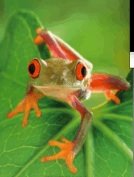Saturday, November 29, 2008
PHOTOSYNTHESIS ACTIVITIEs
1. http://www.pbs.org/wgbh/nova/methuselah/phot_flash.html
2. http://www.harcourtschool.com/activity/science_up_close/311/deploy/interface.html
3. www.mrhartog.com/ch06/ch06_bp.html
4. http://www.quia.com/quiz/871142.html?AP_rand=457754170
5. http://www.quia.com/rr/261262.html
6. Absorption of Energy
7. http://www.funtrivia.com/playquiz/quiz2199831930210.html
8. PHOTOSYNTHESIS, IN GENERAL
9. HARVESTING LIGHT
HOW PHOTOSYNTHESIS WORKS
Tuesday, November 25, 2008
ASSORTED ATP/RESPIRATION LINKS
1. ATP Hangman Game: (Click on the letters to guess which are in each word.) List the answers from the hangman game.
http://www.quia.com/hm/235954.html?AP_rand=409516430
2. Look at the cartoon at this site. Describe what is happening in words.
http://biologyinmotion.com/atp/index.html
3. Watch this. What is going on?
http://student.ccbcmd.edu/biotutorials/energy/atpan.html
4. Watch this. What is going on?
http://student.ccbcmd.edu/biotutorials/energy/adpan.html
5. Silent Fly-over of the Mitochondria: http://www.teachersdomain.org/asset/tdc02_vid_mitochondria/
2. Cellular Respiration Game
http://www.quia.com/hm/285765.html
4. Respire to be a Millionaire:
http://www.quia.com/rr/216170.html
5
Draw a picture of the mitochondrion on your sheet.
Cellular Respiration Game
http://www.quia.com/cb/18754.html
2. Muscles and Mitochondria
http://www.teachersdomain.org/asset/tdc02_vid_mitochondria/ 1. What three metabolic pathways produce ATP, the high-energy currency of the cell? Which pathway produces more, and why? Where do these processes occur in a cell? 2. What is the difference between slow-twitch and fast-twitch muscle fibers? 3. Which kinds of activities use mostly slow-twitch fibers? Which use mostly fast-twitch fibers? 4.What increases the number of mitochondria in a cell? 5. How do mitochondria replicate themselves? 6. What is believed to be the evolutionary origin of mitochondria? 7. Describe the mitochondrial DNA (mDNA) theory of aging.
How does Sleep and Drugs affect your Brain Cells? Try these links to find out.
Wednesday, November 19, 2008
STEM CELL LESSON
Try the Stem Cell Interactive. What do you learn about stem cells? Try this activity until you make at least three types of cell.
SECOND TRY THIS:
Try this second Stem Cell Interactive. What do you learn about Stem Cells? Keep going until you have made two diffferent types of cells, and complete the lab coat quiz.
NOW, START ANSWERING THE QUESTIONS ON THE BACK OF YOUR STARTUP,
WHILE COMPLETING THESE ACTIVITIES:
Watch the Stem Cells: Seeds of Hope? video. Afterwards, explore the Stem Cell Debate Web activity.
CHOOSE TWO OF THE FOLLOWING QUESTIONS TO ANSWER:
A. Why are stem cells considered so valuable for medical research?
B. What are three sources of stem cells and the advantages and disadvantages associated with using each?
C. How might a stem cell be used to treat a disease such as diabetes?
D. What issues surround the debate over government funding of stem cell research?
E. What issue do you think needs to be debated as we make decisions about stem cell research?
Watch Immune Cells in Action
1. How are these cells specialized for their function?
Watch the The Embryo Takes Shape video.
2. CHOOSE TWO OF THE FOLLOWING QUESTIONS TO ANSWER:
A. What directs the sequence of events that turn a blob of cells into an embryo with specialized tissues and organs?
B. The narrator says that "cells talk to each other." What does that mean?
C. How do cells in different parts of the embryo become different kinds of cells and organs?
D.What kinds of proteins are found in different cells and organs?
E.What tells the cells which kinds of proteins to make?
F. What is the relationship between DNA, genes, and the proteins that are produced in cells?
3. Watch the Gene Control video.
CHOOSE TWO OF THE FOLLOWING QUESTIONS TO ANSWER:
What is the role of control genes?
What kinds of chemicals do you think the mother deposits on the egg?
How do you think they might "turn on" the control gene?
4. Watch the Genetic Tool Kit video.
CHOOSE TWO OF THE FOLLOWING QUESTIONS TO ANSWER:
A. What do homeobox genes code for in animals?
B. Why are homeobox (also called homeotic) genes called the master control genes, or master switches?
C. What other organisms besides fruit flies have homeobox genes?
D. What does the presence of homeobox genes in fruit flies and mice indicate about their evolution?
E. What does the presence of homeobox genes suggest about the evolution of different eyes in different organisms?
5. Watch the Stem Cells: Seeds of Hope? video. Afterwards, explore the Stem Cell Debate Web activity.
CHOOSE TWO OF THE FOLLOWING QUESTIONS TO ANSWER:
A. Why are stem cells considered so valuable for medical research?
B. What are three sources of stem cells and the advantages and disadvantages associated with using each?
C. How might a stem cell be used to treat a disease such as diabetes?
D. What issues surround the debate over government funding of stem cell research?
E. What issue do you think needs to be debated as we make decisions about stem cell research?
AUDIO TEXTBOOK
Try the Chapter 7 sections. (Might be a good idea before the take home test)
Or get ahead, and listen to Chapter 8!
Better yet-- if you're one of those people who dozes off when you're supposed to read your Biology book, turn on the Audio section, and then read along with it. It really works-- you really learn, and probably won't space out as much!
Tuesday, November 18, 2008
COW EYE DISSECTION, AND OTHER STRUCTURES AND FUNCTIONS
Record three parts of the eye. For each one, describe IN DETAIL the structure and function of each part.
Sickle Cell and Healthy Red Blood Cells
What are the differences in STRUCTURE between the sickle cell and healthy red blood cells? How do you think this effects the FUNCTION of the cell-- moving through narrow blood vessels to deliver oxygen?
http://www.pbs.org/wgbh/evolution/library/01/2/quicktime/l_012_02.html
Watch this clip, describe the difference between Sickle Cells and Red Blood Cells
http://www.mrhartog.com/webquest.html
Go to this link. Put Arnold's body together. Write one organ for each organ system.
http://www.quia.com/quiz/1318020.html
Try this sample quiz about Section 7-4 in your book.
Plant and Animal Cell
What are the differences in STRUCTURE between the plant and the animal cell? How do you think this helps explain the difference in FUNCTIONbetween plants and animals?
Cell Membrane
What are the structures of the cell membrane? How does this structure help in its function?
